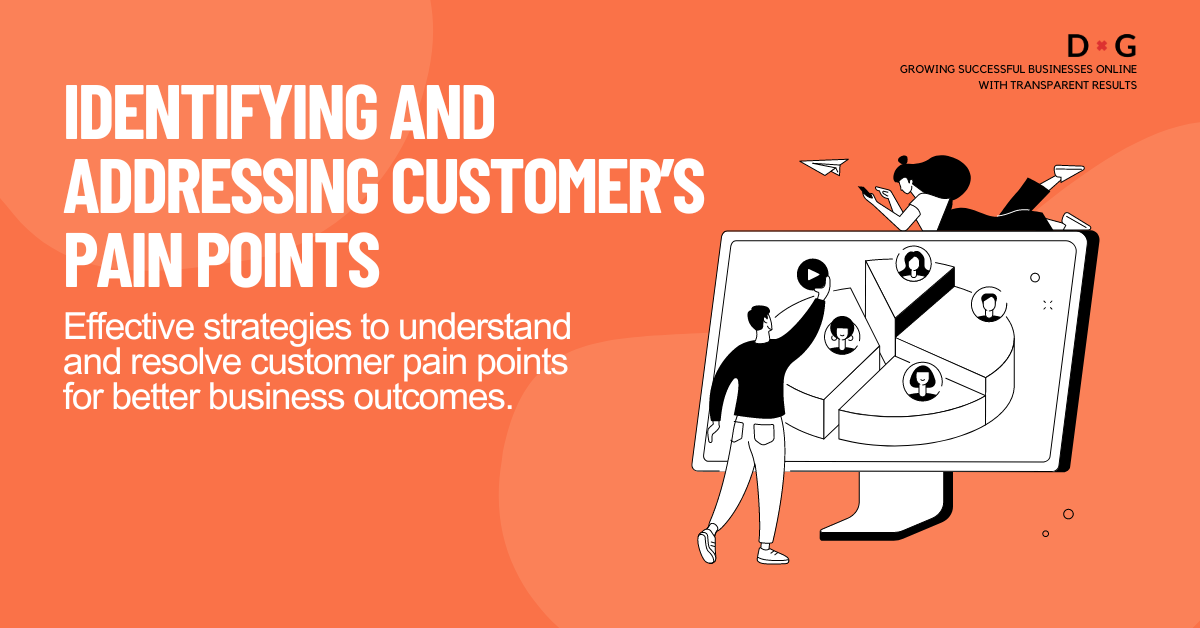
Pain points are specific problems or frustrations your potential customers face, and identifying these can unlock significant opportunities for your business. By identifying and addressing these customer’s pain points, you can create targeted solutions that truly resonate with your audience, develop effective campaigns, improve customer satisfaction, and ultimately drive growth.
How to Identify Customer’s Pain Points
To effectively identify your customers’ pain points, you need to employ a variety of methods and approaches.
Let’s start with the basics:
Conduct Surveys and Interviews
Use surveys, interviews, and feedback forms to ask open-ended questions and learn about your audience’s challenges and frustrations.
Analyse Customer Data
Use analytics tools to examine customer behaviour, interactions, and feedback.
Look for patterns in purchase history, website navigation, and customer service logs to identify common pain points.
Monitor Social Media and Reviews
Monitor social media interactions and online reviews. Use social listening tools to track brand mentions and or sentiment to identify recurring complaints or issues.
Engage with Sales and Support Teams
Collaborate with sales and support teams who have direct contact with customers. They can provide valuable insights into common pain points and recurring issues.
Additional Strategies to Understand Customer’s Pain Points
To gain a deeper understanding of your customer’s pain points, consider implementing these advanced strategies:
Customer Journey Mapping
Develop customer journey maps to pinpoint areas where problems occur. This visual approach helps you understand the entire experience from the customer’s perspective.
Competitor Analysis
Study your competitors to see how they handle common industry pain points. Analyse their reviews and feedback to find gaps in the market that your business can fill.
Focus Groups
Organise focus groups to gather in-depth insights about customer experiences. These discussions can reveal deep-rooted issues not evident through surveys or data analysis alone.
Use Case Studies
Develop case studies showcasing how your solutions have addressed customer pain points. This builds credibility and provides a roadmap for handling similar issues in the future.
Strategies for Addressing Customer’s Pain Points
Once you have identified your customers’ pain points, the next step is to develop effective strategies to address them.
Improving Products or Services
Enhance product or service features to resolve pain points. Invest in research and development, implement feedback loops, and ensure high-quality standards to minimise issues and improve satisfaction.
Enhancing Customer Support
Train your support staff to handle issues efficiently and empathetically. Offer multichannel support (phone, email, chat, social media) to meet customer preferences and provide proactive support to prevent issues from arising.
Streamlining Processes
Simplify complex processes like checkout or onboarding. Use process mapping, automation, and user-centred design to make interactions seamless and efficient.
Communicating Effectively with Customers
Effective communication is key. Be transparent about issues and solutions, provide regular updates, and educate customers about new features or processes to ensure a smooth transition and maximise value.
Conclusion
Understanding your customers’ pain points helps you create better solutions and stand out from the competition. Use these strategies to find and address customer needs, turning pain points into opportunities for growth and innovation.
If you’re looking to refine your marketing approach and leverage insights to elevate your business, consider booking a free consultation with Digital Guide today. Let’s turn your customer pain points into opportunities for success!
